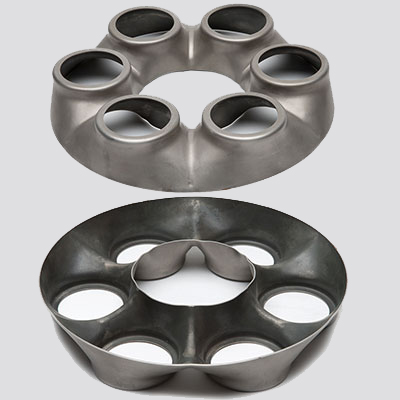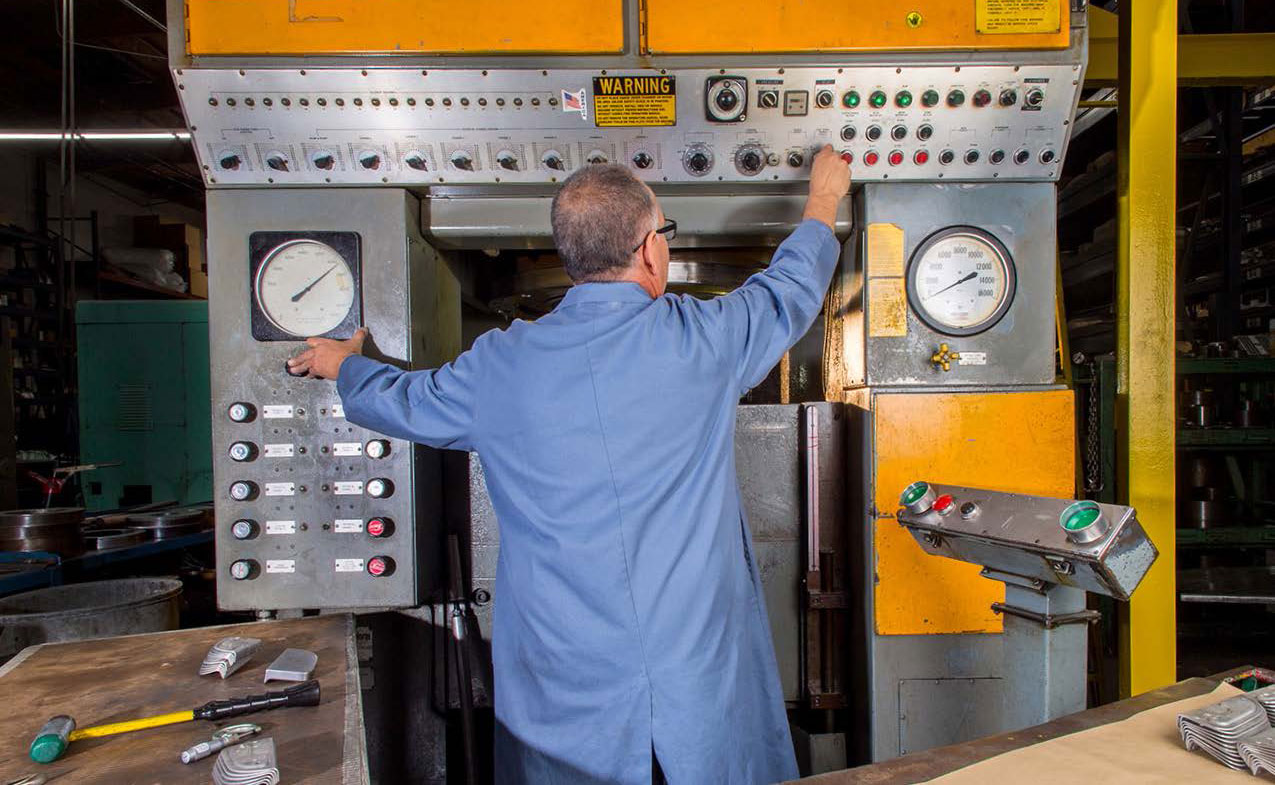Reasons to Consider Hydroforming Over Traditional Metal Stamping
The Six Primary Benefits of Hydroforming
Welcome to your comprehensive guide to the primary benefits of hydroforming, the revolutionary and simplified method of forming high-quality machine parts. Hydroforming is the alternative to traditional metal stamping that is quickly becoming the industry standard for short runs and production-quality prototype units. It is further poised to offer many other metal forming applications a new standardized method that far exceeds the process and products produced by other machinery in quality, efficiency, and cost.
Composed of an upper forming chamber with a flexible bladder and a lower hydraulic ram, hydroforming greatly simplifies the production of deep-drawn shapes. The hydroforming process forms complex parts to close tolerances with excellent surfaces that require little to no finishing. It also has the ability to form stepped, irregular-shaped parts in a single operation rather than the standard series of sequential steps often required by other forming machines.
This document will examine six main benefits of hydroforming compared to more conventional methods of metal stamping. It will also further reveal the hydroforming process through the explanation of each benefit. By the end of this eBook, you will attain a functional understanding of how the hydroforming process works, the machinery and materials involved, why the process is significantly different from other methods, and how that difference positively impacts the potential operator.


1. Cost Savings
Hydroforming vastly reduces the tooling required for pressing and forming, even when working on the most complex parts. The hydroforming process only requires two primary components—a draw ring to act as
a blank holder, and a male die or punch. The hydroforming machine set-up contains a diaphragm crafted rubber, which serves as a flexible and ubiquitous female die. As a result of these minimal internal
requirements, hydroforming tooling usually costs less than half of the tooling required by traditional presses.
As such, the overall cost of tool materials is greatly reduced. Hardened steel tools are rarely utilized in the process. The majority of draw rings and punches are composed of inexpensive, easily machined
low carbon steel which provides exceptionally long tool life. Kirksite and casted plastics can also be used for very short runs.
2. Simple Tool Installation & Maintenance
The process of installing and maintaining traditional press tools can be both lengthy and costly. Hydroforming tools, however, are designed to mount quickly without the need for complex manual
adjustments. Hydroforming tools automatically align and center upon installation, saving time, cost, and preventing wear and more frequent maintenance.
Matched die methods used for forming can cause scuff marks, shock, and stretch lines. In the hydroforming method, however, the wrapping action of the flexible rubber diaphragm virtually eliminates or
reduces these faults, saving operators up to 90% in finishing costs.
3. Form Versatility
Hydroforming has the ability to form unusual non-symmetrical or uniquely curved shapes with ease due to the fact that the process does not require matching dies. For specialty parts manufacturers, this is
an absolute must, as it has the potential to cut labor by as much as two-thirds.
4. Minimal Material Thinout
Instead of stretching, hydroforming flows the metal. This produces minimal material thinout at a rate generally lower than 10% overall. Depending on the initial thickness of the metal, the open end of the
part may contain a slightly higher wall thickness, which provides a superior advantage for a wide range of secondary processes (welding, for example).
The minimal amount of thinout involved in the hydroforming process also adds to the cost saved in materials, as it allows thinner blanks to be used and produces less waste. This factor is particularly
important when expensive alloys or a large number of parts are ordered.
5. Reduced Operations
The hydroforming process also reduces the number of operations and secondary finishing processes required with traditional pressing and forming. This greatly reduces maintenance costs and saves valuable
time and labor. Many parts that would require several operations on a conventional press can be accomplished in a single hydroforming operation.
6. Material Versatility
Virtually every sheet metal that can be cold formed has the ability to be hydroformed, including:
- Aluminum
- Brass
- Carbon Steel
- Copper
- Haynes 188 & 230
- Inconel 718 & 625
- Precious metals
- Stainless steel
- Titanium (CP grades primarily)
Hydroforming is also suitable for a range of material thicknesses between 0.01 inches to 0.5 inches. This is important because it means varying thicknesses of metal can be formed within the machine
without fabricating additional tooling, again saving significant cost and labor.
Hydroforming for Any Industry
As you can see, hydroforming opens up a vast new arena of possibilities for metal forming applications of all varieties. The simplification of the machinery and its operation revitalizes and streamlines
almost every aspect of the forming process, saving you time, cost, and maintenance on the machine itself, as well as providing those same benefits for every part tooled.
California Hydroforming takes immense pride in our unique ability to produce a wide range of formed hardware for endless applications. Our vast experience allows us to perform the hydroforming process to
its maximum capabilities and produce the best formed parts possible. In addition, our singular ability to form those special parts that usually require multiple operations has been developed and honed
over sixty years. We are happy to perform production run sizes under 20 pieces and up to much larger quantities.
California Hydroforming Company is AS9001 & AS9100 certified, which demonstrates our focus on providing quality products to our customers through strict adherence to industry standards and best practices.
Samples of industries served by California Hydroforming Company and our hydroforming process include:
- Commercial aircraft
- Aerospace
- Military
- Energy
- Fuel Cells
- Lighting fixtures
- Medical
- Cookware
- Private-funded programs
- Bicycles
To learn more about the hydroforming process and how it can save time and costs for your application, feel free to request a quote or contact us.
